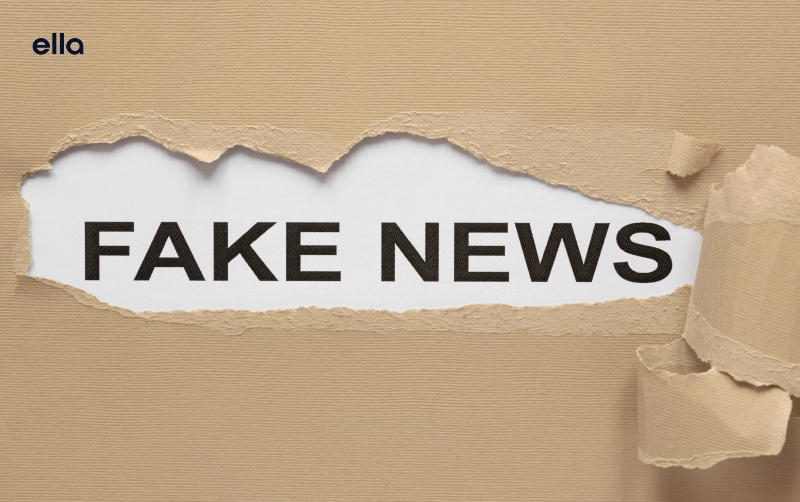As a middle schooler, you’re probably exposed to a lot of information every day. But not all of the information you see is true, and it can be hard to tell what’s true. Believe it or not, some people out there are spreading incorrect information in order to advance their own personal agendas and they don’t care who they’re hurting along the way.
In this post, we’ll define fake news and misinformation, explain why it’s important to recognize it, and offer advice on how to become a critical consumer of information.
What is fake news and misinformation?
Fake news is defined as false stories or articles intended to mislead people. They can be written by anyone, and they frequently use sensational headlines and emotional language to pique readers’ interest. Misinformation, on the other hand, is information that is incorrect or misleading but is not always purposefully false. Rumors, social media, and even word of mouth can spread misinformation.
Articles that say that Obama is secretly a Kenyan Muslim or that the Earth is flat are examples of fake news and wrong information. To many people, stories like this sound crazy, but there are some people who believe them and they can actually cause real world harm.
Why is it important to identify fake news and misinformation?
It’s important to be able to spot fake news and false information for a number of reasons. First, spreading false information can hurt people and society as a whole. It can cause fear, feed conspiracy theories, and in the worst cases, even lead to violence. Going back to the Obama example, during his re-election campaign, there was a lot of momentum behind the fake news rumor that he was born in Kenya– so much so that he felt pressured to release his birth certificate to the public. This caused a lot of embarrassment for him and his family.
Second, you need accurate information to make good decisions about important things. If you think that an election is going to be “stolen” for example, you might decide not to do your civic duty and vote.
Lastly, it’s up to each of us to be careful about what information we take in and not spread false information. You don’t want to inadvertently contribute to harming someone or causing them to make bad decisions.
Tips for identifying fake news and misinformation
Here are some easy-tips to help you identify fake news and misinformation:
1. Check the source
Checking the source of information is one of the simplest ways to identify fake news and misinformation. Look for credible sources, such as well-known news outlets or scientific journals. Be wary of unknown sources or those with a reputation for disseminating false information. Hopefully, your teachers have taught you to use respectable sources and to avoid sensational ones.
2. Look for corroborating evidence
If something sounds too good to be true (or too bad), it probably is. Look for other sources that either back up the story or disprove it. If you can’t find any other information about it, it’s probably false or misleading.
3. Analyze the language and tone
Misinformation and fake news will frequently employ sensationalist language and emotional appeals in an effort to get a reader’s attention. Be aware of articles that are written in all capital letters, have a large number of exclamation marks, or use overly provocative language.
4. Be aware of bias
Everyone, including members of the news media and those who work in journalism, is biased in some way. Be conscious of the potential for bias in the sources you’re reading and make an effort to acquire information from a variety of points of view.
We will cover how to look at things from different points of view in another article. Follow our blog to make sure you don’t miss out.
5. Think critically
Lastly, be skeptical and always ask questions. Who was the author? What proof do they give to back up what they say? What do they mean by this? By using critical thinking skills, you can protect yourself from falling for false news and misleading information
How to avoid spreading fake news and misinformation
As we mentioned before, it’s also important not to spread false information and fake news yourself. It can cause fear and panic, give rise to conspiracy theories, and even hurt people or society as a whole. Furthermore, spreading false information can hurt your reputation and your credibility.
Here are some tips to help you avoid being part of the problem:
1. Verify before sharing
Take the time to confirm that a story or article is accurate before you share it with others. Verify the information at the source, look for other sources that support the statements being made, and think critically about the data.
2. Be responsible with social media
Social media is an effective tool for disseminating information, but it also serves as a breeding ground for fake news and misinformation.
Be mindful of what you post on social media. Never share articles or stories without first verifying their accuracy. And if you see someone else spreading misinformation or fake news, gently correct them by providing accurate information.
3. Be cautious of clickbait
Clickbait is a type of headline or article that is designed to get you to click on it, even if the content isn’t very good. Be cautious of clickbait, and try to avoid clicking on articles that seem too sensational or outrageous to be true.
Conclusion
Fake news and misinformation are becoming more common, but with some practice, you can learn to be a critical consumer of information. Always be skeptical, double-check your sources, and consider the claims being made critically. Remember that it is your personal responsibility not only to identify fake news and misinformation but also to avoid spreading it to others. By following these guidelines, you can help ensure that you and your friends are receiving accurate and trustworthy information.

